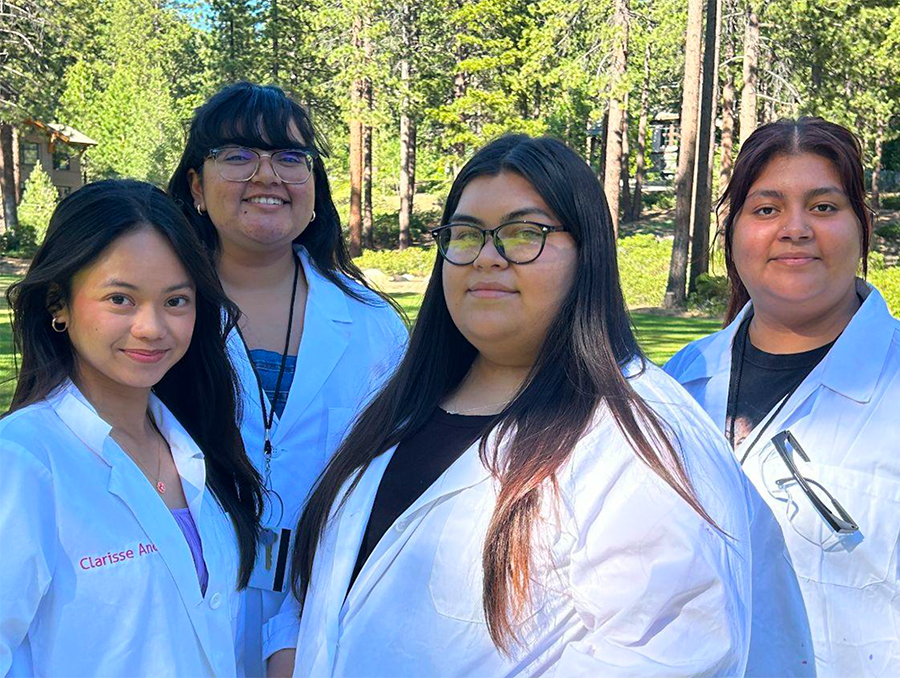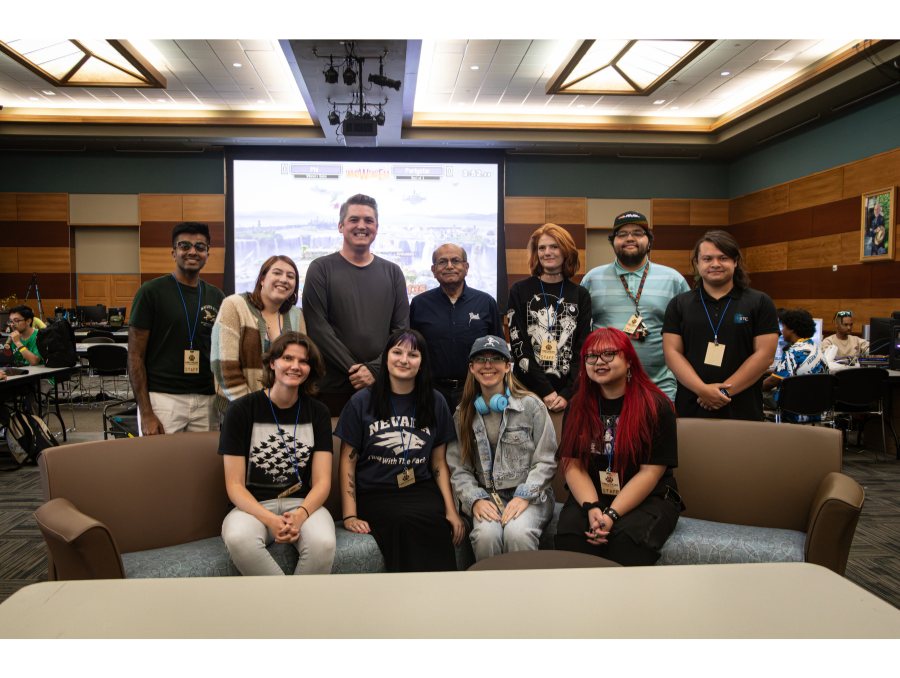AI for research – it's not all robots and self-driving cars
How AI and machine learning can enhance research across campus
(Note: Eelke Folmer received his Ph.D. in software engineering from the University of Groningen in 2005 before joining the University of Nevada, Reno in 2006. He works mostly on Human-Computer interaction. In recent years, he has been working on virtual reality, specifically exploring solutions that allow users to navigate large environments without getting motion sickness.)
From drones and robots to self-driving cars and smart refrigerators, advances in artificial intelligence (AI) and machine learning are making the front page almost every day. Google Trends shows that searches for AI recently rose 200 percent, and between the NSF, NIH, and Departments of Energy and Defense, funding for AI surpasses $6 billion (that’s not to mention the $36 billion in corporate funding for AI in 2019 alone). But it’s not just advances in the field of AI itself that are making waves. AI and machine learning are being used as tools in other areas of scientific research to enhance analytic capacity and introduce a new approach to problem solving. Nationally renowned research programs are building AI and machine learning into almost every area of scientific research.
AI has enormous potential to transform our lives, and with 63% of the Department of Computer Science & Engineering faculty doing research in AI/machine learning or robotics, we’re fortunate to have significant strength in this important and relevant area, and have the opportunity to have real world impact. In fiscal year 2020, the department had $3.1 million in research expenditures and $5.4 million in research awards. By focusing on high quality research and publishing in top tier venues, our department has grown its reputation – we’re currently ranked 21st in robotics in the country – a status that will help us continue to recruit top faculty and the best graduate students. This will allow us to engage in cross-disciplinary research collaborations that take advantage of the increasing funding opportunities for AI/machine learning research.
I see the role of our department becoming a service for campus researchers. We can provide an “AI toolbox,” if you will, for researchers from other disciplines to use to augment their own problem-solving methods. With our specialized skill sets, AI researchers can be your resident experts to help solve complex problems. To explore some of these potential collaborations, my department teamed up with Research & Innovation’s Research Development team to host an AI for Research symposium over Zoom on June 10. The goal was to connect university AI experts with research faculty in other disciplines. We were thrilled to have faculty from 18 departments and seven colleges engage in discussion. We all learned about some current cross-disciplinary research projects on campus and shared ideas for new ways to enhance research with the data-processing speed and sophistication of AI. Nevada is in a spectacular position to submit competitive proposals that incorporate AI and machine learning into research projects as diverse as medicine, biomechanics, public policy and journalism.
Before I go any further, I’ll define some terms so we’re all on the same page.
- Artificial intelligence (AI) is a branch of computer science that deals with the simulation of intelligent behavior in computers.
- Machine learning is a subset of AI that uses statistics and learning algorithms (essentially, a recipe for doing something in an unambiguous way) to give machines the ability to learn from data.
- Deep learning is a subset of machine learning that mimics layers of neurons in the brain that learn how to recognize complex patterns in data.
At our June 10 university-wide seminar, CSE faculty shared some cross-disciplinary projects they are already working on. We heard from Emily Hand, Lei Yang, Feng Yan, Kostas Alexis, David Feil-Seifer, Christos Papachristos, Alireza Tavakkoli, and Shahriar Badsha. I’ll share a few of their projects here, but I encourage you to check out the recording to hear from them all and learn about the fascinating ways our faculty are integrating AI and machine learning into all types of research on campus.
One of Assistant Professor Emily Hand’s cross-disciplinary projects seeks to understand the role of gender bias in political news articles. Dr. Hand and her colleagues have collected a dataset of news articles that span the ideological spectrum, from the far left to far right. Then, they removed all gendered information and all personally identifiable information from every article. With those pieces omitted, they were able to train a machine learning model to distinguish between articles about men from articles about women. They examined the words being used in each article and found more emotionally negative words associated with women, specifically, a disparate use of adjectives, where words like “smart” and “strong” were used to describe men, whereas words like “thin” and “aggressive” were more often used to describe women. They have been able to use Machine Learning to unlock the text of thousands of news articles, and are now looking for collaborators in fields like political science and linguistics to help address some of the questions their data has exposed.
Assistant Professor Feng Yan and Assistant Professor Lei Yang talked about their cross-disciplinary project with the College of William and Mary, Assistant Professor of Physics Heather Holmes and Professor Graham Kent in the College of Science. Using the data gathered by the AlertTahoe and ALERTWildfire networks of remote cameras that detect wildfire and resulting smoke, a system developed by Dr. Kent, Drs. Yang and Yan apply big data and AI techniques to enable real-time, fine-grained wildfire smoke tracking and air quality monitoring. Assistant Professor Feng Yan also shared how he’s working with PIs to enhance their computational capacity to process large amounts of data. He uses real-time deep learning to automate the process of fine-tuning machine learning models for science and engineering applications that require fast turnaround times, such as tracking wildfire and its smoke. “A lot of science and engineering PIs are facing the problems of data processing, model/ algorithm development and optimization, parameter tuning, and software/platform building,” he said. “When you have big data to deal with, or the problem is too complex to use conventional methods, this is usually when we can help as we are good at improving the speed and accuracy of the data processing and model development through intelligent approaches.”
Associate Professor Alireza Tavakkoli works to understand the basis of human and machine perception by integrating physical and virtual environments. He works with the Center for Integrative Neuroscience, using virtual/augmented/mixed reality, machine learning and AI, to understand the complex relationships between the structure and physiology of the human eye and its visual function and perception.
There are so many possible opportunities for cross-disciplinary collaborations across campus, and the applications for AI and machine learning in all different kinds of research are exciting to think about.
If you missed the AI for Research seminar in June, you can watch the recording anytime. As with the research itself, though, I know we didn’t even scratch the surface of what is possible. Could AI be used in social work, studio arts, or sociology? I don’t see why not, and I’d love to chat with you about how AI and machine learning could be used in your research – so send me an email anytime. And look for future seminars that explore exciting research collaborations like these.














